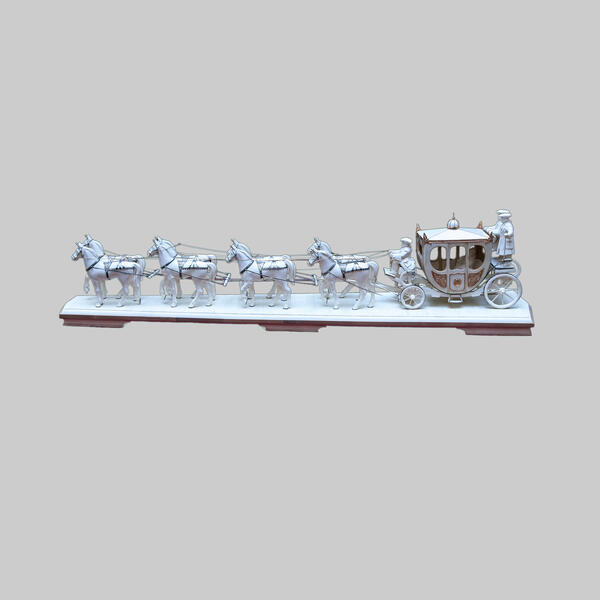The Tobolsk bone carving is a unique direction in the Russian folk arts and crafts. Bone carving has been known in Tobolsk since the 17th century. The founders of this type of art were Swedish officers exiled to Siberia and captured during the Northern war. In the 19th century, the first Siberian workshop of such items opened, and in the 20th century there was a factory of bonecarve items which is currently the only one in the country.
The historical and geographical features of the region provided the craftsmen with a unique fully sculptural material — mammoth bones and tusks. They can still be found along the banks of Siberian rivers.
Many talented artists — Porfiry Terentyev, Gennady Krivosheev, Gavriil Khazov and others created miniature sculptures from mammoth tusk, cachalot bones, hypotarsuses, elk and deer horns, walrus fang. The works of Tobolsk bone carvers of different generations received many national and international awards, and their works are kept in the Hermitage and the Russian Museum.
The presented work ‘Departure of the Empress’ is made by the famous modern craftsman Mukhametvali Kulmametov.
The craftsman made a luxurious carriage drawn by eight horses from a mammoth tusk and set it on a stand that imitates a cobblestone pavement. The Empress sits in the carriage, dressed in the fashion of the 40s of the 18th century. She looks through the window with her hand up to her hair. The coachman at the front of the carriage and two footmen on the monkey board are dressed in livery and three-cornered hats with a trimming. Elegant elements of horse harness and carriage decorations are made of precious metals — gold and silver.
Mukhametvali Kulmametov was born on August 15, 1954 in Tobolsk. Craftsman of bone carving, author of sculptural compositions, member of the Union of artists of the Russian Federation since 1997. He started working as an artist in 1976 at the city, regional, provincial and zonal exhibitions. His works were presented to two Russian presidents: Vladimir Putin and Dmitry Medvedev, as well as the Patriarch of Moscow and All Russia Alexy II and many others.
The historical and geographical features of the region provided the craftsmen with a unique fully sculptural material — mammoth bones and tusks. They can still be found along the banks of Siberian rivers.
Many talented artists — Porfiry Terentyev, Gennady Krivosheev, Gavriil Khazov and others created miniature sculptures from mammoth tusk, cachalot bones, hypotarsuses, elk and deer horns, walrus fang. The works of Tobolsk bone carvers of different generations received many national and international awards, and their works are kept in the Hermitage and the Russian Museum.
The presented work ‘Departure of the Empress’ is made by the famous modern craftsman Mukhametvali Kulmametov.
The craftsman made a luxurious carriage drawn by eight horses from a mammoth tusk and set it on a stand that imitates a cobblestone pavement. The Empress sits in the carriage, dressed in the fashion of the 40s of the 18th century. She looks through the window with her hand up to her hair. The coachman at the front of the carriage and two footmen on the monkey board are dressed in livery and three-cornered hats with a trimming. Elegant elements of horse harness and carriage decorations are made of precious metals — gold and silver.
Mukhametvali Kulmametov was born on August 15, 1954 in Tobolsk. Craftsman of bone carving, author of sculptural compositions, member of the Union of artists of the Russian Federation since 1997. He started working as an artist in 1976 at the city, regional, provincial and zonal exhibitions. His works were presented to two Russian presidents: Vladimir Putin and Dmitry Medvedev, as well as the Patriarch of Moscow and All Russia Alexy II and many others.



